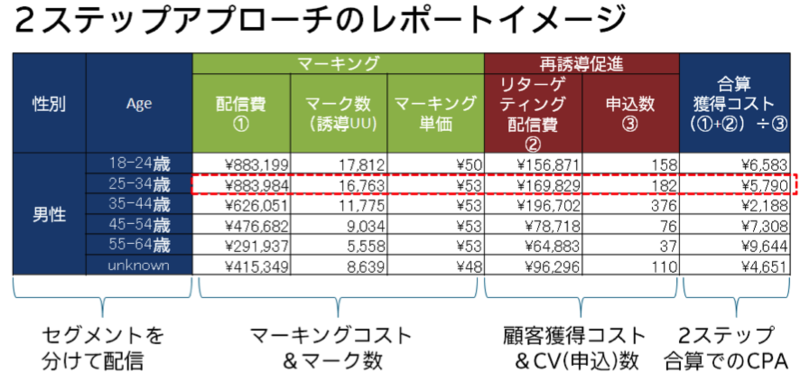To expand the potential audience in the purchase funnel
The ultimate key to pursuing advertising effectiveness in the digital world is the PDCAcycle—Plan → Do → Check → Act —rapidly iterating this process to maximize performance. Last May, Dentsu Inc. established Nextedge Dentsu, a group company dedicated to optimizing this PDCA operation. Behind this move lies the Dentsu Group's unique evolution in programmatic advertising, a hot topic in recent years. The new concept of advertising "management," when properly implemented, can not only convert the traditionally targeted audience into customers but also effectively develop potential customers. Furthermore, it has the potential to transform marketing as a whole. Tomohiko Sugiura of the company explains its overview and effective management techniques in a two-part series.
Advertising is something to "control" – The emergence of performance advertising
As digital advertising becomes widespread, advertising is shifting from something you "buy" to something you "control." With mass advertising, the effectiveness of placed ads was ultimately accepted as a result. Digital advertising, particularly performance-based advertising, is different. Advertisers can place ads, analyze results, make improvements, and place ads again—repeating this cycle at a very granular level to proactively enhance effectiveness. Dentsu Inc. established a new group company, Nextedge Dentsu, in May of last year. Rather than creating a department, we founded a PDCA management company specialized in boosting digital advertising results to respond swiftly and dynamically to this new trend.
Last year marked a turning point for programmatic advertising. Major media companies expanded their programmatic advertising product offerings, and advancements in technology and tools made freely controlling ad delivery almost commonplace. As mentioned earlier, the changing nature of advertising itself signifies a paradigm shift for the entire advertising industry.
Two key characteristics define programmatic advertising. First, its highly flexible targeting capabilities. Advertisers can achieve precise targeting based on user attributes and interests (demographic/psychographic axes), search keywords (keyword axis), and environmental factors like location and device (environmental axis). While traditional advertising often saw higher ad costs with finer targeting, programmatic allows advertisers to bid at their desired price point—typically a cost-per-click model—enabling both quality and efficiency.
The second is its rich variety of creative formats. These range from static banners to dynamic creatives—recommendation banners that display products tailored to each user's browsing history—and increasingly include video ads. The ability to select the right format for each objective and visualize results in real time defines performance-based advertising.
To briefly outline the evolution of performance-based advertising: first, search-linked ads on platforms like Yahoo and Google enabled purchasing through a bidding format where prices are specified. Next, performance-based advertising expanded to display ads, and recently, ads on social media platforms like Facebook and Twitter have also adopted this model.
This evolution stems from advancements in advertising technology and shifts in consumer behavior. As consumers became constantly connected online via smartphones and other devices, the environment evolved to enable cross-device ad delivery across platforms like PCs and smartphones. Consequently, programmatic advertising now covers most of consumers' primary touchpoints.
The more controllable it becomes, the more success hinges on strategy and know-how
New concepts and keywords emerge daily in marketing. Is digital programmatic advertising just another one of these? I believe programmatic advertising represents the prototype of next-generation marketing. We've entered a dynamic and fascinating world where, for the first time, we have the environment to control "when, to whom, where, what, and how much" to communicate – something every marketer has likely dreamed of. However, it's also true that the more control you gain over advertising, the greater the gap in results becomes in practice. Even if you think you're running campaigns similarly, the presence or absence of strategy and know-how can easily lead to results differing by a factor of five or ten. You could say the responsibility on advertisers and agencies has grown heavier.
But there's no need to feel intimidated. I suggest keeping it simple. At Nextedge Dentsu Inc., we base our approach on three fundamental methods, categorized by "where in the purchase funnel we target people."
The purchase funnel, which visualizes the purchasing stages as a funnel shape, allows us to divide consumers into three groups: "Potential Need Stage," "Consideration Stage," and "Prospective Stage." Corresponding to these, the three core methods are: push-type display ads to stimulate the Potential Need Stage, pull-type search-linked ads to guide the Consideration Stage, and follow-up retargeting ads to reliably capture the Prospective Stage.
Direct and Branding to Develop Potential Segments
Current performance advertising primarily focuses on converting the consideration stage into the prospect stage through search-linked ads and retargeting. However, our strategy doesn't stop there. We target the entire customer funnel, tackling the new frontier of "elevating the potential stage to the consideration and prospect stages, ultimately converting them into customers."
So, what approaches are effective for engaging potential and consideration audiences? Here, we introduce two solutions: direct response-oriented and branding-oriented. Even for direct response initiatives, expanding reach is paramount. Without reaching new users, the acquisition of final customers will inevitably taper off. Building on that, we enhance conversion efficiency, using appropriate creative and content to move as many users as possible from the potential stage to the consideration stage, and then connect them to acquisition through retargeting.
On the other hand, branding approaches haven't been a major focus in digital advertising until now. However, the proliferation of rich media ads like video has made them feasible. Both methods face challenges in cost efficiency and setting effective metrics, requiring advanced expertise.
Strictly speaking, the boundary between these two approaches is becoming increasingly blurred. We believe many companies will inevitably need to consider implementing both strategies going forward. We, too, pursue contributions to the ultimate outcome by combining these two approaches.
In the second part, we will delve deeper into these two approaches and introduce them with case studies.


